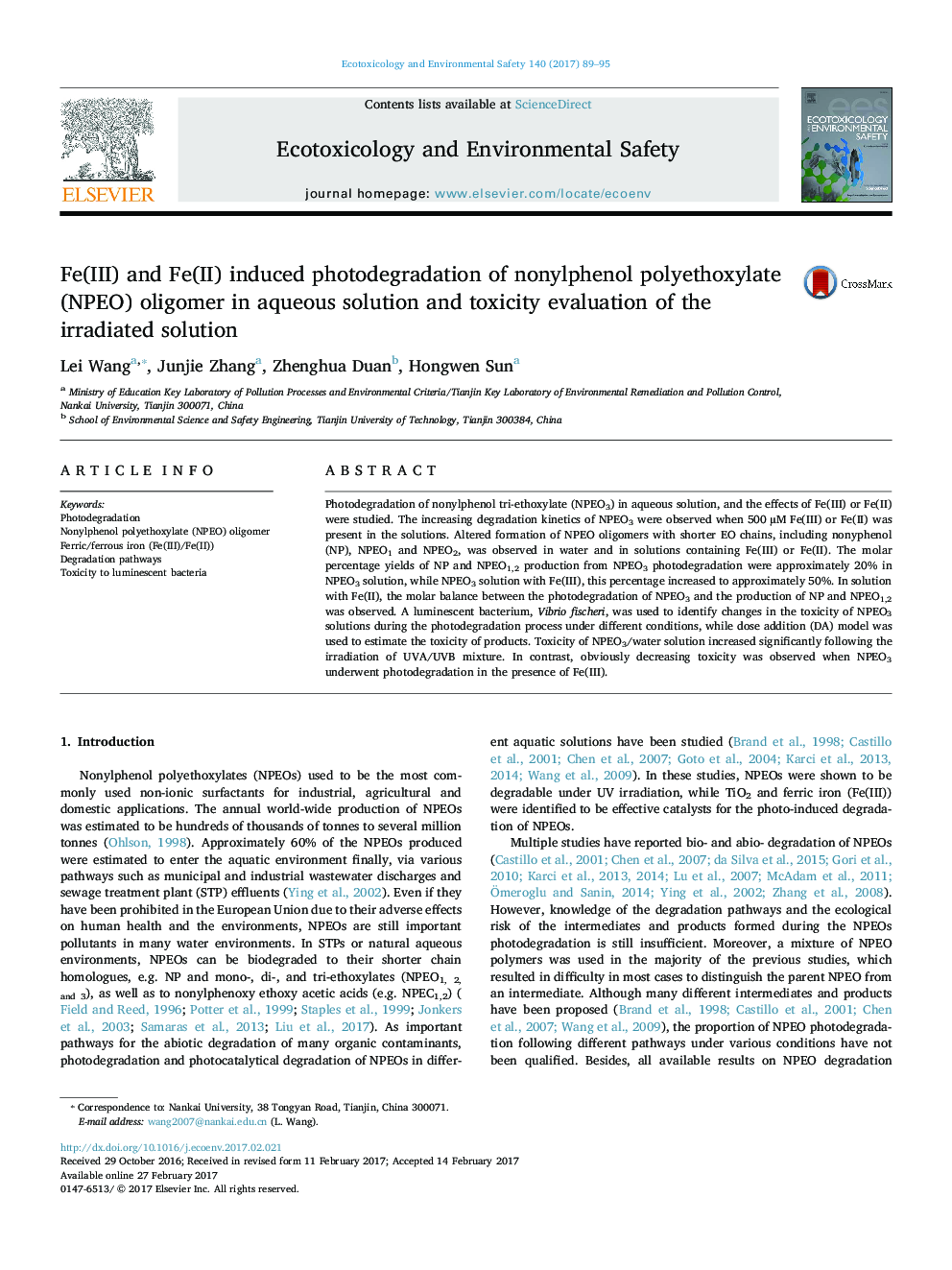| Article ID | Journal | Published Year | Pages | File Type |
|---|---|---|---|---|
| 5747691 | Ecotoxicology and Environmental Safety | 2017 | 7 Pages |
â¢Photodegradation of NPEO3 increased in solutions containing Fe(III) or Fe(II).â¢Molar balance exists between Fe(II) induced NPEO3 reduction and NPEO0-2 production.â¢Mechanisms other than âªOH reaction involved in iron induced photodegradation.â¢Altered solution toxicity was measured using luminescent bacterium.
Photodegradation of nonylphenol tri-ethoxylate (NPEO3) in aqueous solution, and the effects of Fe(III) or Fe(II) were studied. The increasing degradation kinetics of NPEO3 were observed when 500 µM Fe(III) or Fe(II) was present in the solutions. Altered formation of NPEO oligomers with shorter EO chains, including nonyphenol (NP), NPEO1 and NPEO2, was observed in water and in solutions containing Fe(III) or Fe(II). The molar percentage yields of NP and NPEO1,2 production from NPEO3 photodegradation were approximately 20% in NPEO3 solution, while NPEO3 solution with Fe(III), this percentage increased to approximately 50%. In solution with Fe(II), the molar balance between the photodegradation of NPEO3 and the production of NP and NPEO1,2 was observed. A luminescent bacterium, Vibrio fischeri, was used to identify changes in the toxicity of NPEO3 solutions during the photodegradation process under different conditions, while dose addition (DA) model was used to estimate the toxicity of products. Toxicity of NPEO3/water solution increased significantly following the irradiation of UVA/UVB mixture. In contrast, obviously decreasing toxicity was observed when NPEO3 underwent photodegradation in the presence of Fe(III).
